New to forklifts? Start here!
17 December 2019
Are you new to forklifts? Or need a quick recap? This article will get you familiar with the basics.
The different parts of the forklift
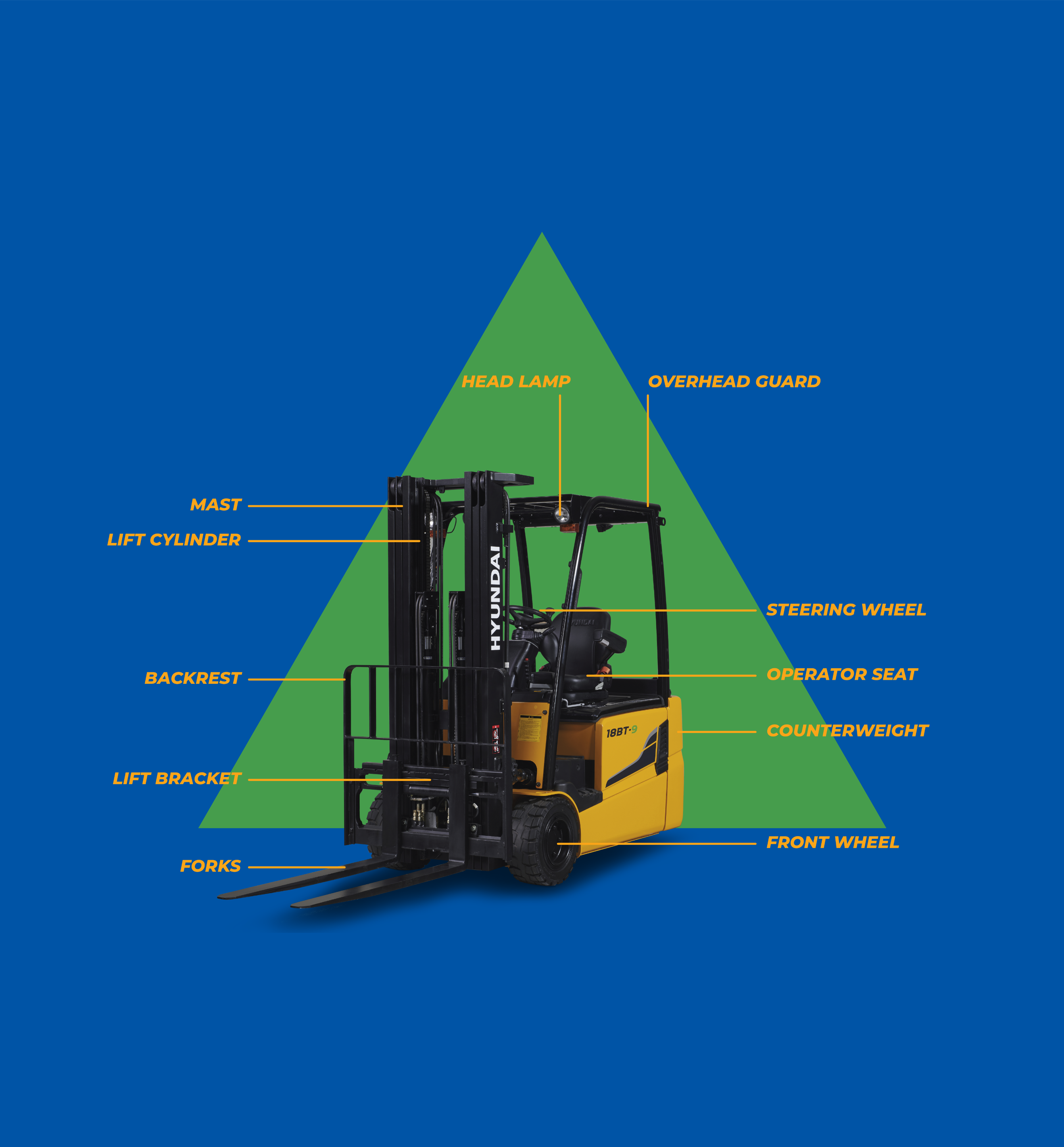
- Mast: The mast is the vertical support that permits raising and lowering the load.
- Carriage: A support structure where the forks are attached or mounted.
- Back rest: Attached to the carriage and prevents the load shifting backwards, it protects the mast cylinders hose as well as preventing any goods falling through the mast and hitting the operator.
- Fork: The cantilevered arm attached to the load carriage, that engage the load.
- Lift cylinder: Controls the amount by which the mast structure, forks and carriage may be raised or lowered in the vertical.
- Rating plate: this is used to inform users of the maximum load a forklift can legally carry.
- Counter weight: The weight installed by the Hyundai to give stability to the machine under load.
The forklift mast
Types of masts
- Duplex (two stage): this type has two sections, the outer that does not move and an inner that raises and elevates the carriage and forks.
- Triplex (three stage): consists of three sections (one outer and two inner rails). The two inner sections raise from outside to inside as the mast elevates higher. The mast type provides a shorter lowered height for use through doorways.
- Quad (four stage): consists of four sections (one outer and three inner rails). These sections raise from outside to inside, in four sections as the mast rises. Quad masts have the shortest lowered height and are used where there are very low height restrictions such as container doors.
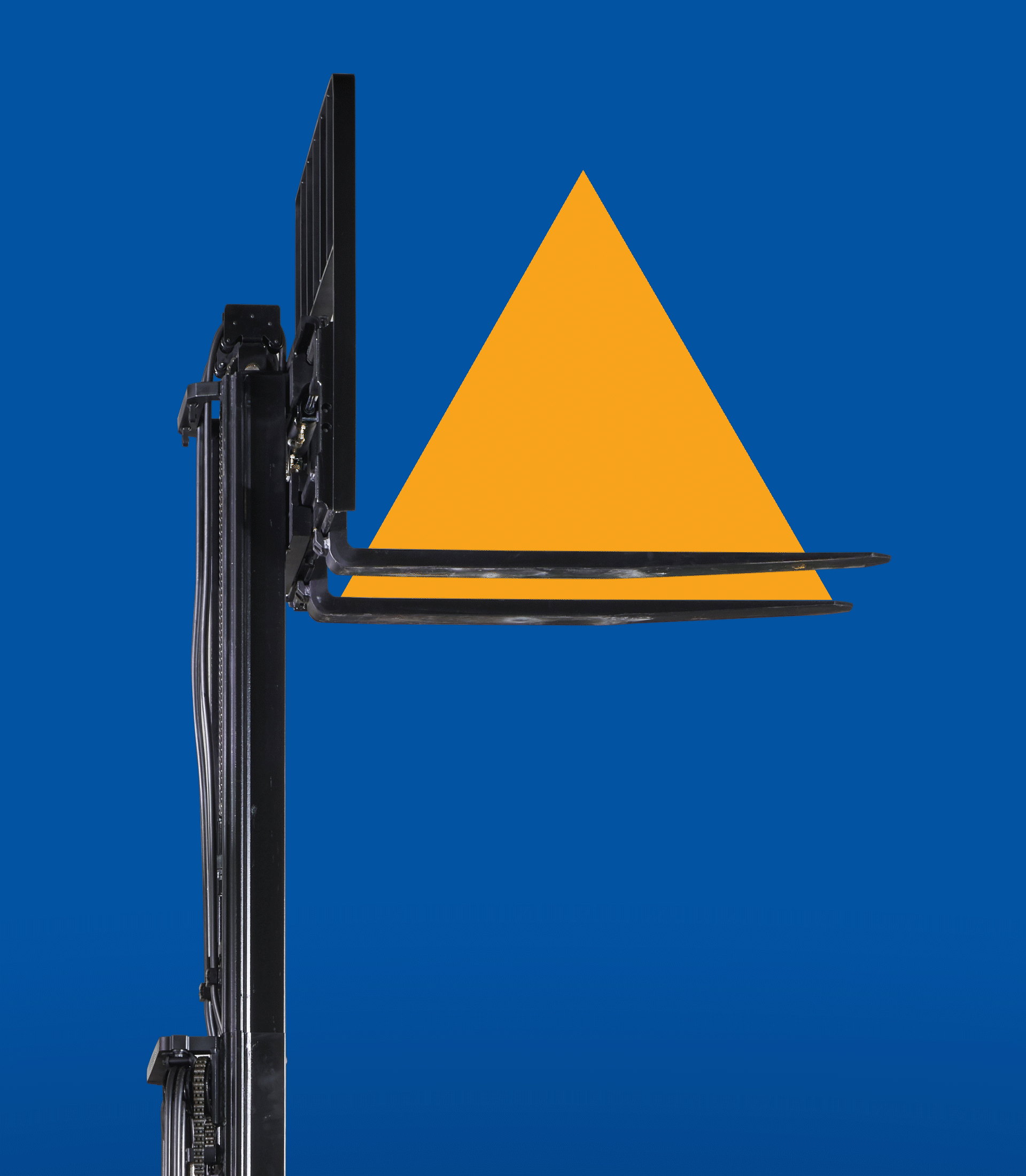
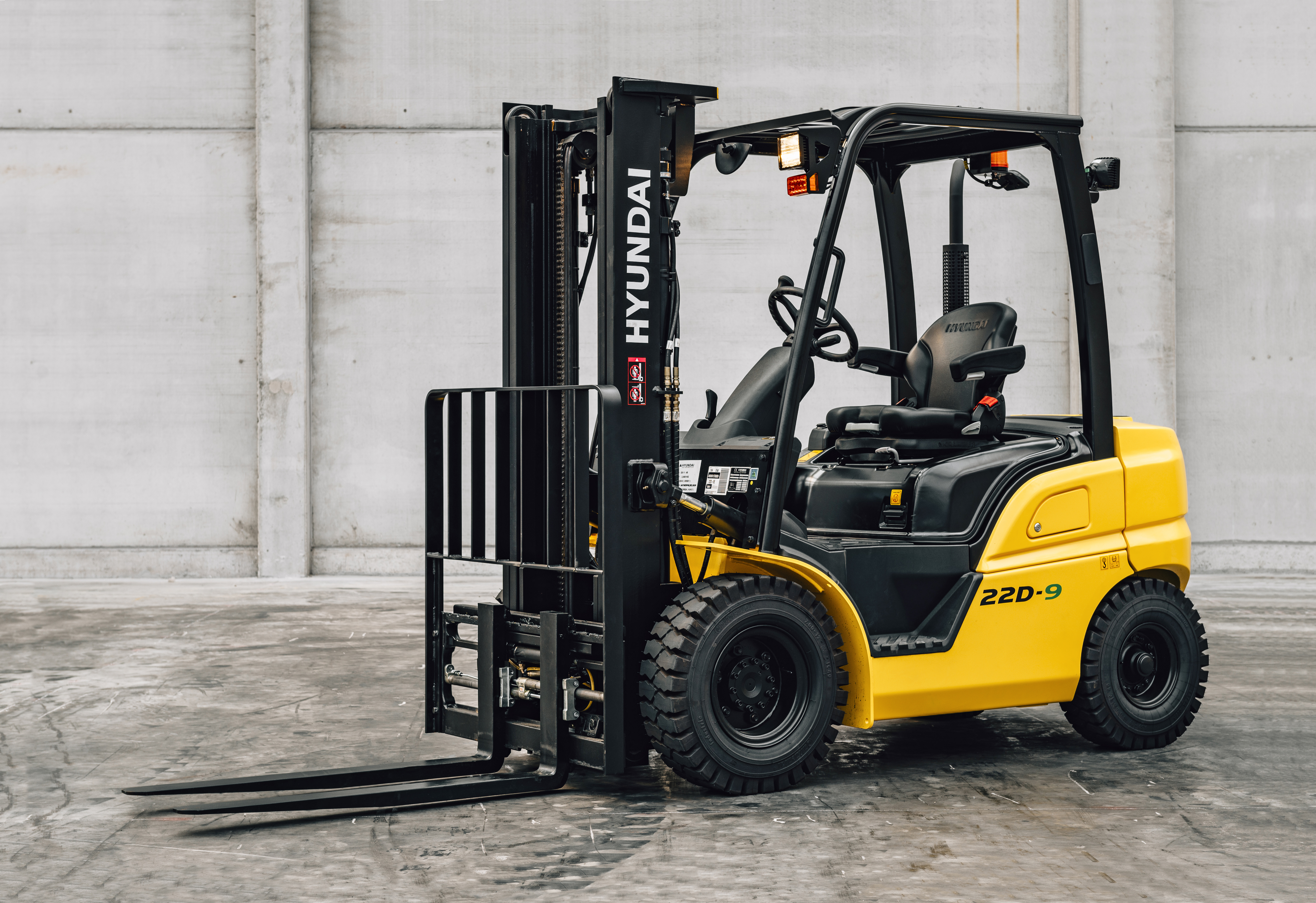
Dimensions
- Overall length: the measure of a forklift from the front end of the fork arm to the back end of the machine. This is important to know as you need to be aware of how much room is in your factory so the forklift is able to manoeuver efficiently and safely.
- Overall height: refers to the forklift’s height which is measured from the ground to the highest point on the forklift. This may be the top of the mast of the top of the overhead guard. You must be weary of specific aspects such as deflated tyres or a large overhead guard that rises above the mast. It is essential to know your forklifts overall height to ensure it fits through all doorways within your factory or location.
- Overall width: the width of a forklift can vary depending on where the measurements are taken from. Measurements are taken on either side of the machine body from a variety of positions including the axles, fender, fork carriage and tyres so be sure to specify with whoever you are dealing with which point your forklift is being measured from.
Stability features
When working with loads the stability of your forklift is one of the most important aspects you should be aware of. Below are a few features you should keep in mind.
Load capacity
The maximum weight (materials) a forklift can carry at a given “load center”, with the mast held in a vertical position. The load rating is usually expressed in kilograms or pounds and the standard load center in millimetres or inches. This will be presented on the rating plate.
Load center
The load center describes the distance from the face of the forks to the center of gravity of the load. The center of gravity of any object is the imaginary point about which the weight of the object is evenly distributed. Forklifts do not have a fixed centre of gravity, the centre of gravity moves as the machine performs certain tasks such as pick up or put on loads.
Remember:
- As a load is lifted and lowered, the combined center of gravity will also move up and down
- As the mast is moved forward and back, the combined center of gravity also moves forward and backward.
- As the mast is tilted forward and backward, the combined center of gravity moves forward and backward.
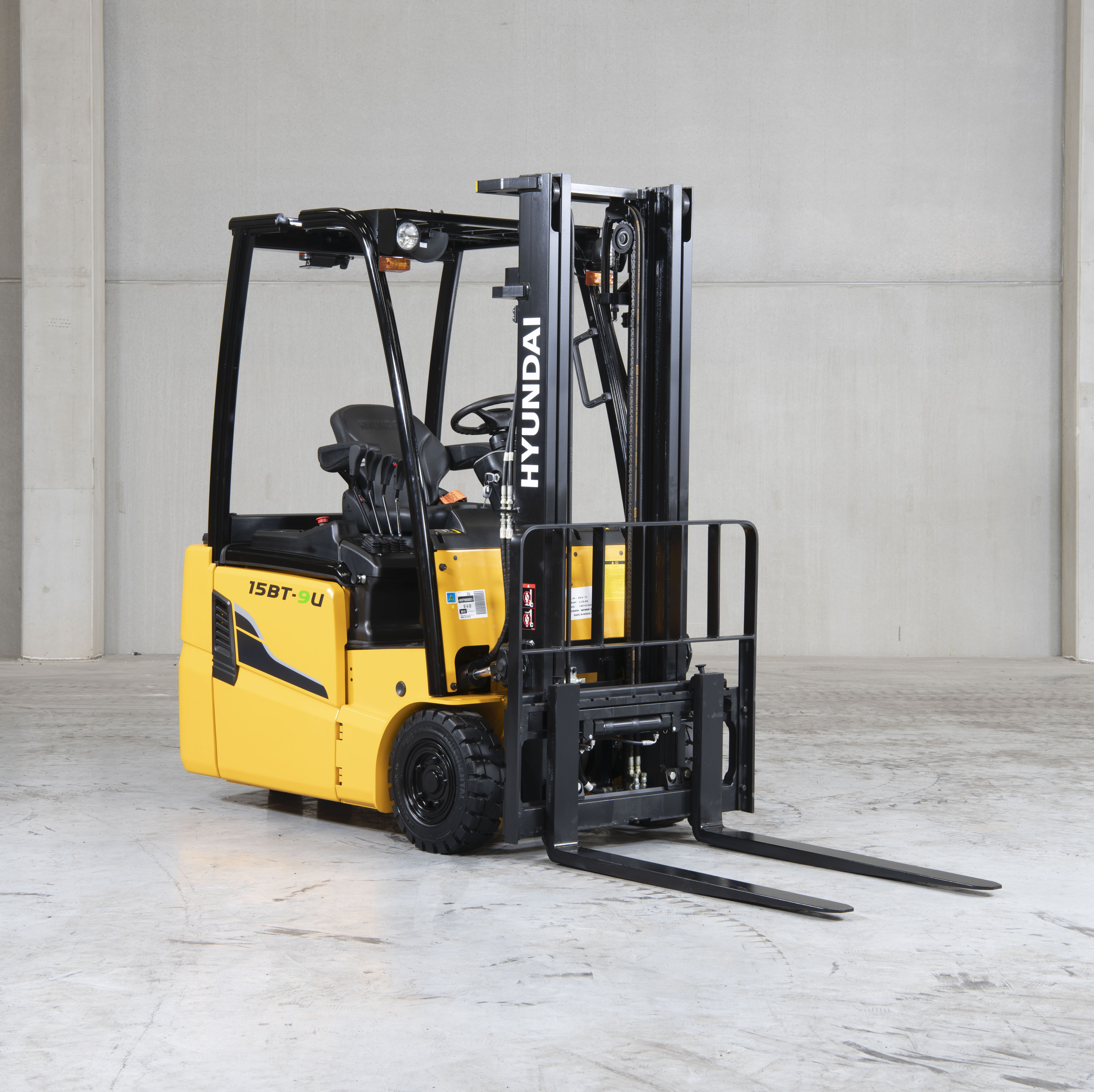
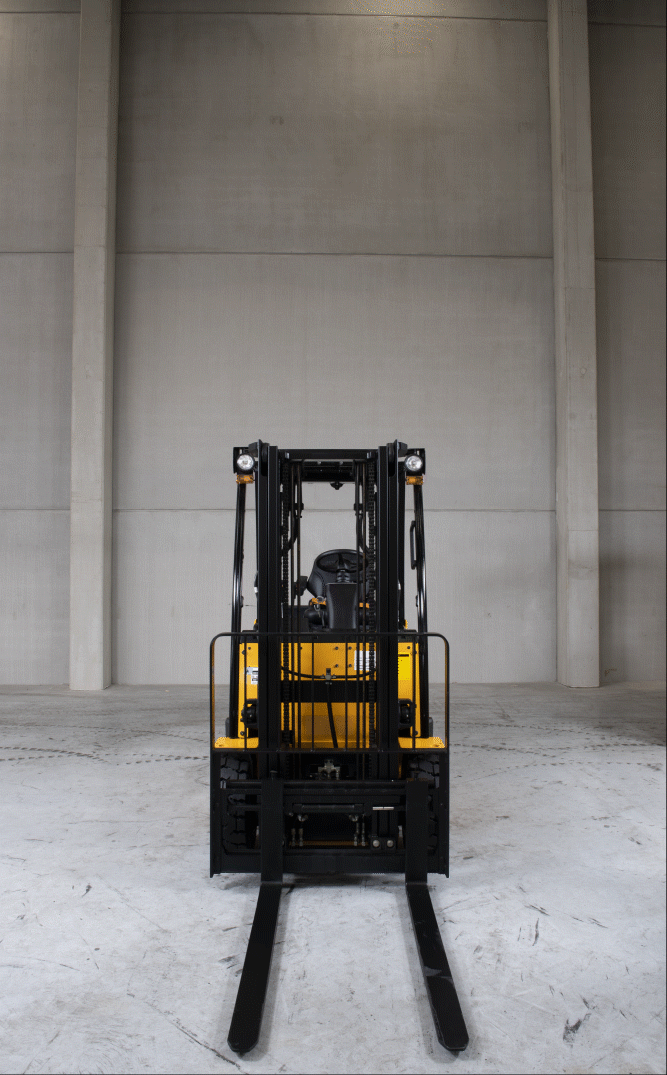
Stability triangle
The stability triangle is the area under the forklift which it must keep its center of gravity within for the truck to be stable. If the center of gravity moves outside the stability triangle, the forklift will tip.
Manoeuvrability
Manoeuvrability is an extremely important topic that must be covered and understood when researching and learning about forklifts as it is typically overlooked until it is too late.
Tilting angle
The tilting angle is the maximum angle in which a mast can tilt forward and backward. The tilting angle varies when dealing with different forklifts, masts and attachments and is also limited with high masts to maintain truck stability. Depending on what materials you are carrying, you may require a higher tilt angle to ensure stable manoeuvrability and avoid any loss of loads.
Right angle stacking aisle
The right angle stacking aisle is the terminology to describe the amount of load a forklift can carry and turn to a 90 degree angle. When dealing with racking and loading your materials onto shelves this is the most important piece of information you need to know, as it will tell you the maximum load you can carry.
Grade ability
This is the angle of a ramp/slope a forklift can travel up/down on. An important factor to take into consideration is whether you forklift is carrying a load or not, which will affect the grade ability.
Forklift types
- Pallet Truck (class II): Typically used for moving pallets and crates of small loads at ground height.
- Electric Warehouse equipment (class II & III): Stand-on or ride-on used in small spaces and are quite manoeuvrable and can lift small to medium loads. (i.e. Reach trucks, electric pallet trucks and pallet stackers)
- Electric Counter Balance Forklift (class I): Used to lift medium to large loads with a battery powered engine, making it less pollutant (more suitable for indoors) with lower operating costs.
- IC (Internal Combustion) Engine Trucks (Class IV & V): The most commonly used forklifts normally outdoors. This type of forklift is typically cheaper to purchase and lifts heavier loads, and works in all types of weather running off liquefied petroleum gas (LPB), liquid propane, diesel and compressed natural gases (CNG).


Forklift tyres
Tires are extremely important as they will help manoeuvrability an functionality of your forklift. Improper use and poor maintenance of tyres can lead to increased costs to your business. There are typically three different types of tires, including:
- Pneumatic: used in unpaved yards and on rough terrain surfaces.
- Pneumatic Profile Puncture Proof (Semi-Solids): used on sealed surfaces and areas where punctures may be an issue.
- Cushion: used on more compact model forklifts in warehouse applications.
- Non-markers: made to eliminate black marks on the floor.
Want to learn more about your forklift?
Catch up on these topics:
- Forklift tires
- Heels, hooks, forks and tips
- Daily forklift inspection
- Buying a forklift
- The lifespan of a forklift